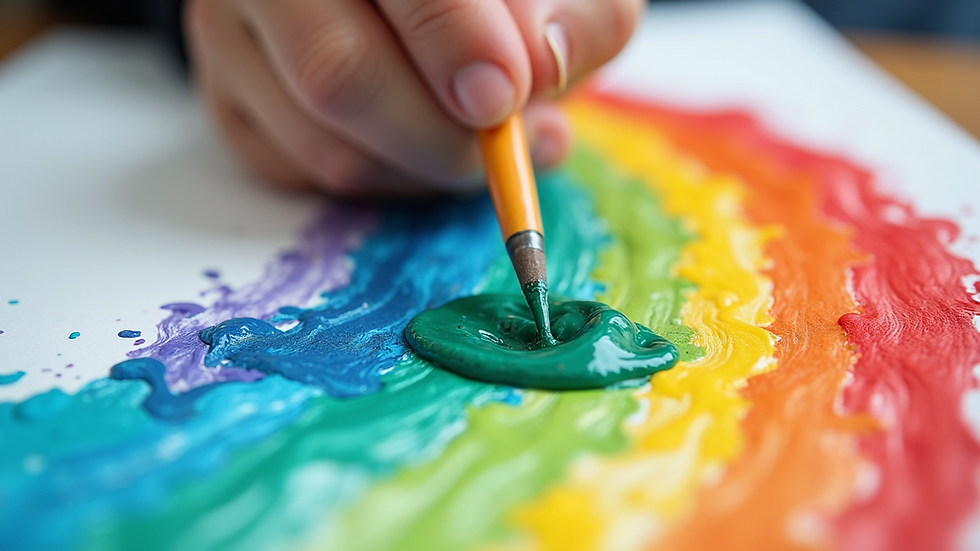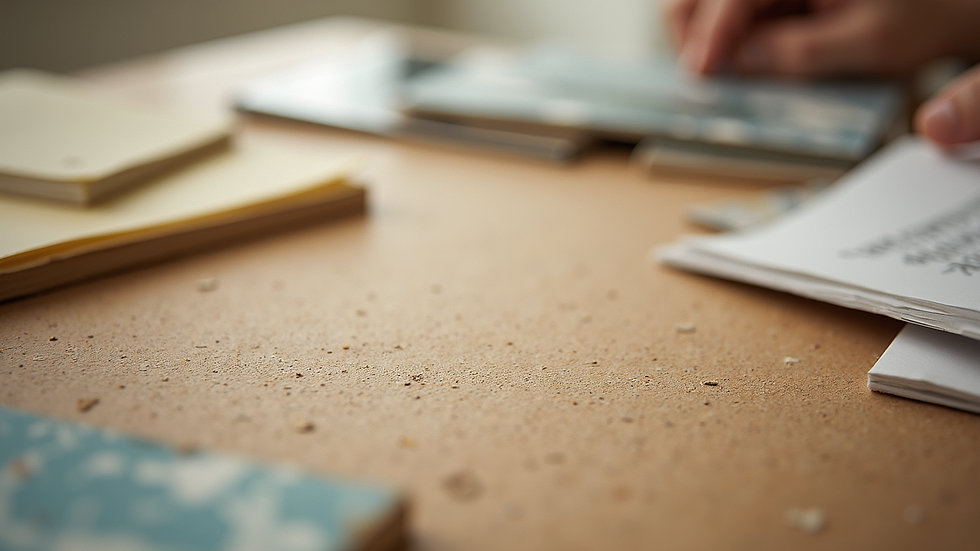Sensory Art Activities for Infants in Singapore
- Go Bananas! Content Team
- Aug 11
- 4 min read
Updated: Sep 11

Sensory play is essential for infant development. It helps babies explore the world through their senses - touch, sight, sound, smell, and taste. Combining sensory play with art activities creates a fun and educational experience for infants. In Singapore, parents and caregivers can find many ways to introduce sensory art activities that stimulate babies' creativity and cognitive growth.
Sensory art activities encourage infants to experiment with different textures, colors, and materials. These activities support fine motor skills, hand-eye coordination, and early communication. This article explores practical and enjoyable infant art activities in Singapore that promote sensory development.
Infant Art Activities in Singapore: Creative Ideas to Try at Home
Introducing infant art activities in Singapore can be simple and affordable. You do not need expensive materials to create sensory-rich experiences for your baby. Here are some ideas to get started:
Finger Painting with Edible Colors
Use natural food coloring mixed with yogurt or mashed fruits to create safe finger paints. Let your infant explore the colors and textures on a large sheet of paper. This activity encourages tactile exploration and visual stimulation.
Textured Collage Boards
Collect different textured materials such as felt, cotton balls, sandpaper, and bubble wrap. Glue them onto a sturdy board or cardboard. Allow your baby to touch and feel the various surfaces. This helps develop sensory discrimination.
Water and Ice Play
Fill a shallow tray with water and add ice cubes or floating toys. Infants can splash, grasp, and observe the melting ice. This activity introduces temperature differences and enhances sensory awareness.
Scented Playdough
Make homemade playdough infused with natural scents like lavender or lemon. The soft dough is perfect for squishing and molding, stimulating both touch and smell senses.
Nature Art Exploration
Collect leaves, flowers, and small twigs during a walk in a park. Use these natural items to create simple art projects. This connects infants with nature and introduces new textures and smells.
These activities are easy to set up and can be adapted to suit your infant’s preferences and developmental stage.

Benefits of Infant Art Activities in Singapore for Early Development
Engaging infants in art activities has numerous benefits beyond just fun. Here are some key advantages:
Enhances Sensory Processing
Art activities expose infants to different sensory inputs, helping their brains process and integrate information effectively.
Boosts Creativity and Imagination
Even at a young age, infants begin to experiment with colors and shapes, laying the foundation for creative thinking.
Improves Motor Skills
Manipulating art materials strengthens hand muscles and coordination, essential for later skills like writing.
Supports Emotional Expression
Art provides a non-verbal way for infants to express feelings and experiences.
Encourages Parent-Child Bonding
Participating in sensory art activities together fosters connection and communication.
In Singapore, where space can be limited, these activities can be tailored to small areas and use everyday household items. This makes sensory art accessible to all families.

What Age Should Babies Start Sensory?
Sensory play can begin very early in infancy. Newborns start experiencing the world through their senses immediately. However, structured sensory art activities are best introduced when babies show readiness, usually around 3 to 6 months old.
At this stage, infants can:
Hold objects briefly
Focus on bright colors and patterns
Respond to different textures and sounds
Starting sensory art activities early supports brain development during critical growth periods. Always supervise infants closely to ensure safety, especially with small or edible materials.
As babies grow, activities can become more complex, involving more movement and interaction. For example, by 9 to 12 months, infants may enjoy finger painting or exploring scented playdough with guidance.

How to Create a Safe Sensory Art Environment for Infants
Safety is paramount when introducing sensory art activities to infants. Here are some tips to ensure a secure and enjoyable experience:
Use Non-Toxic Materials
Always choose baby-safe, non-toxic paints, glues, and playdough. Homemade options using food ingredients are ideal.
Avoid Small Parts
Keep materials large enough to prevent choking hazards. Avoid beads, buttons, or anything that can be swallowed.
Supervise Constantly
Never leave infants unattended during sensory play. Be ready to intervene if they put materials in their mouths.
Prepare the Space
Cover surfaces with washable mats or newspapers for easy cleanup. Choose a comfortable area with good lighting.
Dress Appropriately
Use old clothes or aprons to protect infants’ clothing from stains.
Introduce One Material at a Time
This helps monitor reactions and prevents overwhelming the baby.
By following these guidelines, parents and caregivers can create a nurturing environment that encourages exploration and creativity safely.
Where to Find Sensory Art Resources and Playgroups in Singapore
Singapore offers various resources and playgroups that focus on sensory art for infants. Joining these groups can provide social interaction and expert guidance.
Playgroups and Early Learning Centres
Many centres incorporate sensory art activities into their programs. They provide age-appropriate materials and trained facilitators.
Community Centres and Libraries
Look out for workshops and events designed for infants and toddlers. These often include sensory art sessions.
Online Resources and Kits
Websites like sensory art for infants offer ideas, tutorials, and kits that can be used at home.
Parent Support Groups
Connect with other parents to share tips and organize group activities.
Exploring these options can enrich your infant’s sensory experiences and provide valuable support.
Sensory art activities are a wonderful way to nurture your infant’s development in Singapore. By incorporating simple, safe, and creative projects, you can help your baby explore the world through their senses. Whether at home or in a playgroup, these activities lay the foundation for lifelong learning and creativity. Start today and watch your infant’s imagination and skills blossom or contact Go Bananas Art & Craft to sign up for your kids's first art class with us!



